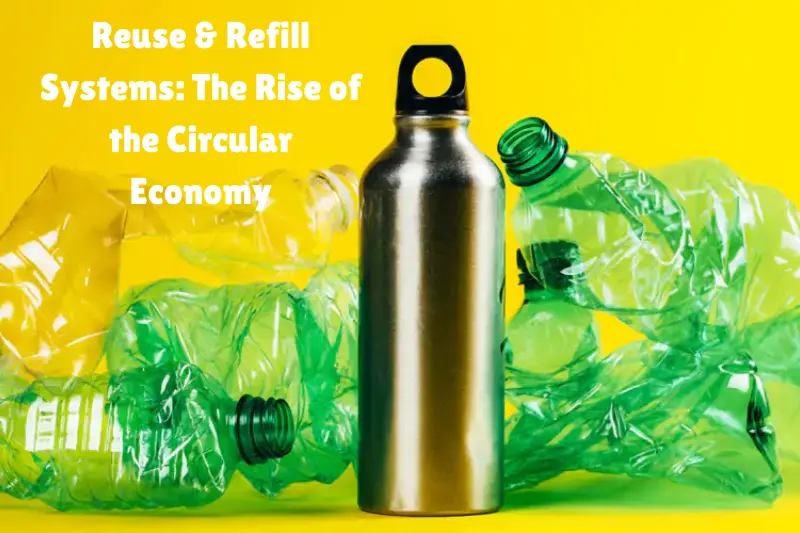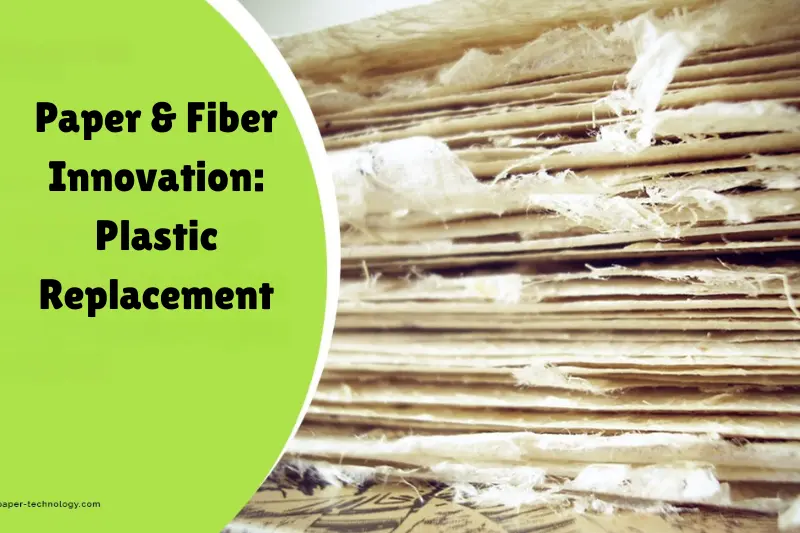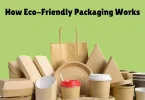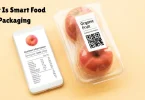Sustainability has evolved from being a marketing trend to a core pillar of business strategy. Today, packaging is no longer just about protecting products or improving shelf appeal — it’s a critical factor in reducing environmental impact, lowering waste, and meeting government regulations.
The top sustainable packaging trends of 2025 highlight the shift toward circular economy models, renewable materials, and smart digital solutions. From reuse systems and post-consumer recycled content to seaweed-based biomaterials and carbon footprint labeling, these innovations are redefining the future of packaging.
1. Reuse & Refill Systems: The Rise of the Circular Economy

One of the most transformative shifts in packaging is the move from single-use to multi-use systems. Instead of discarding packaging after one use, refill and return models encourage customers to bring back containers that can be cleaned and reused.
- Examples in practice:
- Loop by TerraCycle works with global brands like Nestlé, P&G, and Unilever, offering durable containers that are collected, sanitized, and refilled.
- Lush and The Body Shop run return programs where customers receive rewards for bringing back empty bottles and jars.
- Food delivery platforms in Asia and Europe are testing reusable meal boxes, cutting single-use plastic waste from takeout.
- Loop by TerraCycle works with global brands like Nestlé, P&G, and Unilever, offering durable containers that are collected, sanitized, and refilled.
- Why it matters: Reuse reduces waste at its source, lowers the demand for virgin materials, and builds stronger customer loyalty. According to the Ellen MacArthur Foundation, scaling reuse systems could save companies 20% in packaging costs long-term.
- Future outlook: Expect more standardized packaging formats across industries (e.g., universal bottle designs) to make cleaning and reuse easier at scale.
2. Design for Recyclability: Simplifying Packaging Structures
Traditional packaging often combines different materials (like aluminum, plastic, and paper layers) that are nearly impossible to recycle. The new trend focuses on mono-material packaging — using only one type of plastic or fiber so it can easily enter recycling streams.
- Examples in practice:
- Coca-Cola’s 100% rPET bottles are designed for closed-loop recycling.
- Nestlé’s Smarties became the first global confectionery brand to switch entirely to recyclable paper packaging.
- Unilever re-engineered its sachets and pouches to use mono-material polyethylene.
- Coca-Cola’s 100% rPET bottles are designed for closed-loop recycling.
- Why it matters: Simplifying packaging structures makes recycling more efficient and cheaper. With the EU Packaging and Packaging Waste Regulation (PPWR) mandating that all packaging must be recyclable by 2030, this is no longer optional.
3. Post-Consmer Recycled (PCR) Content: Closing the Loop
To reduce reliance on virgin raw materials, brands are adopting post-consumer recycled (PCR) content — packaging made from previously used plastic, paperboard, or aluminum.
- Examples in practice:
- PepsiCo pledged to use 50% recycled plastic in its bottles by 2030.
- Colgate-Palmolive launched a fully recyclable toothpaste tube that includes PCR.
- Adidas and H&M use recycled paperboard for packaging tags and shipping materials.
- PepsiCo pledged to use 50% recycled plastic in its bottles by 2030.
- Challenges: PCR content is often more expensive and in limited supply. Many companies are securing long-term contracts with recyclers to avoid shortages.
- Why it matters: PCR packaging reduces the demand for virgin petroleum-based plastics, directly lowering the carbon footprint of packaging.
4. Chemical Recycling: Breaking Down Plastics
Unlike mechanical recycling, which only reprocesses certain plastics, chemical recycling breaks plastics down to their molecular level. This allows previously non-recyclable materials, like multi-layer films and flexible plastics, to be reused.
- Examples in practice:
- Eastman Chemical and INEOS Styrolution are building large-scale plants to convert waste plastics into usable raw materials.
- LyondellBasell is partnering with waste management companies to expand advanced recycling capabilities.
- Eastman Chemical and INEOS Styrolution are building large-scale plants to convert waste plastics into usable raw materials.
- Why it matters: Chemical recycling can process complex materials that mechanical systems cannot. However, critics note it is energy-intensive and costly, and widespread adoption will depend on scaling efficiencies.
You may also like to read this:
Top Future Food Innovations To Watch For Smarter Eating
What Is Smart Food Packaging? Everything You Should Know
How Eco-Friendly Packaging Works: Complete Guide For 2025
10 Types of Packaging Used In Processed Foods Explained
Why Packaging Affects Food Quality: Complete Guide
Top 10 Best Packaging Innovations In The Food Industry Today
5. Compostable & Biodegradable Materials: Nature-Based Solutions
Biodegradable and compostable packaging is especially relevant for food services and single-use items, where recycling isn’t always possible. Materials include PLA (polylactic acid), sugarcane bagasse, cornstarch plastics, and seaweed films.
- Examples in practice:
- Notpla, a London startup, creates seaweed-based sachets for sauces and drinks.
- Deliveroo and Just Eat are piloting compostable takeaway boxes.
- European supermarkets offer home-compostable produce bags.
- Notpla, a London startup, creates seaweed-based sachets for sauces and drinks.
- Key concern: Compostables only work if proper facilities exist. Without industrial composting, many “biodegradable” items still end up in landfills.
- Future outlook: Expect stricter certification and labeling to prevent greenwashing around compostable products.
6. Paper & Fiber Innovation: Plastic Replacement

Paper and fiber packaging is making a strong comeback, thanks to new barrier technologies that make them water- and grease-resistant.
- Examples in practice:
- McDonald’s phased out plastic straws in favor of paper ones in multiple markets.
- IKEA swapped Styrofoam for molded fiber trays to protect products during shipping.
- Startups are experimenting with paper bottles for beverages with plant-based liners.
- McDonald’s phased out plastic straws in favor of paper ones in multiple markets.
- Why it matters: Paper has higher global recycling rates and is perceived by consumers as more eco-friendly. When sourced from FSC- or PEFC-certified forests, it offers a lower-carbon footprint compared to plastic.
7. Flexible Packaging Recycling: Solving the Biggest Waste Problem
Flexible packaging, such as snack pouches and chip bags, is convenient but notoriously hard to recycle due to multi-material layers. Innovations now focus on recyclable flexible films and dedicated collection programs.
- Examples in practice:
- Nestlé introduced mono-material pouches for pet food.
- Dow Chemical created recyclable polyethylene snack packaging.
- UK supermarkets now provide drop-off stations for flexible plastics.
- Nestlé introduced mono-material pouches for pet food.
- Future outlook: As technology advances, expect expanded curbside collection and advanced recycling integration for flexible materials.
8. Smart Packaging & Digitalization
Digital tools are being embedded into packaging to make it more transparent, traceable, and user-friendly. Smart packaging helps track products, extend shelf life, and guide consumers on disposal.
- Examples in practice:
- The HolyGrail 2.0 project uses invisible digital watermarks to improve sorting at recycling facilities.
- Nestlé and Danone print QR codes on packaging to provide disposal and sustainability info.
- Reusable container platforms embed RFID tags to track returns.
- The HolyGrail 2.0 project uses invisible digital watermarks to improve sorting at recycling facilities.
- Why it matters: Digital solutions bridge the gap between brands, recyclers, and consumers, ensuring packaging is handled correctly after use.
9. Extended Producer Responsibility (EPR): Regulation Drives Change
Governments worldwide are rolling out Extended Producer Responsibility (EPR) laws that make companies accountable for collecting and recycling their packaging.
- Examples:
- The EU requires strict recycling and recycled content targets by 2030.
- U.S. states like California and Maine have passed EPR laws.
- Canada and South Korea are implementing eco-modulated fees, charging more for less sustainable packaging.
- The EU requires strict recycling and recycled content targets by 2030.
- Why it matters: Companies that fail to adapt face financial penalties, reputational risks, and potential market bans.
10. Carbon Transparency & Lifecycle Assessments (LCA)
Brands are conducting Lifecycle Assessments (LCA) to measure emissions from packaging production, use, and disposal. Some are even putting carbon footprint labels directly on packaging.
- Examples in practice:
- Oatly and Quorn display carbon footprint data on packaging.
- Unilever and Nestlé publish detailed sustainability reports including packaging impacts.
- Oatly and Quorn display carbon footprint data on packaging.
- Why it matters: Transparency builds consumer trust, helps meet corporate ESG goals, and allows companies to identify real impact reduction opportunities.
11. Emerging Biomaterials: Seaweed, Mycelium & Edible Films
Startups are pioneering futuristic biomaterials that may replace plastics entirely:
- Seaweed-based films: Biodegradable, edible, and already in use for food sachets.
- Mycelium packaging: Made from mushroom roots, used for protective packaging instead of Styrofoam.
- Edible coatings: Thin, natural coatings applied directly to produce, extending shelf life without additional packaging.
- Examples in practice:
- Ecovative supplies mycelium packaging to IKEA and Dell.
- Notpla’s seaweed coating won the prestigious Earthshot Prize.
- Ecovative supplies mycelium packaging to IKEA and Dell.
12. Consumer Education & Labeling
Even the most sustainable packaging fails if consumers don’t dispose of it properly. That’s why clear instructions and consumer awareness campaigns are vital.
- Examples in practice:
- The How2Recycle label in North America offers simple recycling directions.
- EU brands use QR codes and eco-labels to educate consumers.
- Retailers are launching nationwide awareness drives to reduce recycling contamination.
- The How2Recycle label in North America offers simple recycling directions.
Final Thoughts
Sustainable packaging is not just about choosing paper over plastic. It’s about systemic transformation — designing packaging with its entire lifecycle in mind, reducing waste at the source, and building a circular economy.
The top sustainable packaging trends of 2025 — reuse models, design for recyclability, PCR content, compostables, fiber innovations, flexible packaging recycling, and digital solutions — show the industry’s shift toward packaging that is smarter, cleaner, and truly circular.
Companies that act early will not only comply with stricter regulations but also win consumer trust, boost brand reputation, and secure long-term cost savings.
The future of packaging is not disposable — it is reusable, renewable, and responsible.
FAQs
1. What is sustainable packaging?
Sustainable packaging refers to packaging materials and designs that reduce environmental impact throughout their lifecycle. This includes using renewable, recyclable, or biodegradable materials, minimizing waste, lowering carbon emissions, and supporting circular economy models like reuse and refill systems.
2. Why is sustainable packaging important in 2025?
In 2025, sustainable packaging is more crucial than ever due to stricter government regulations, climate change concerns, and growing consumer demand for eco-friendly products. Businesses that fail to adapt risk higher costs, fines under Extended Producer Responsibility (EPR) laws, and losing consumer trust.
3. What are the top sustainable packaging trends today?
The leading trends include:
Reuse & refill systems
Design for recyclability
Post-consumer recycled (PCR) content
Chemical recycling
Compostable & biodegradable packaging
Paper & fiber innovations
Smart packaging
EPR regulations & carbon transparency
Emerging biomaterials like seaweed and mycelium
4. What are some examples of companies using sustainable packaging?
Coca-Cola: 100% recycled PET bottles
Nestlé: Smarties in paper packaging
Lush & The Body Shop: Refill and return programs
IKEA: Mycelium and molded fiber protective packaging
Oatly: Carbon footprint labels on cartons
5. Is compostable packaging really eco-friendly?
Compostable packaging can be eco-friendly, but only if disposed of correctly. Many compostable products require industrial composting facilities to break down properly. If they end up in landfills, they may not degrade as intended. That’s why infrastructure and consumer education are critical.





